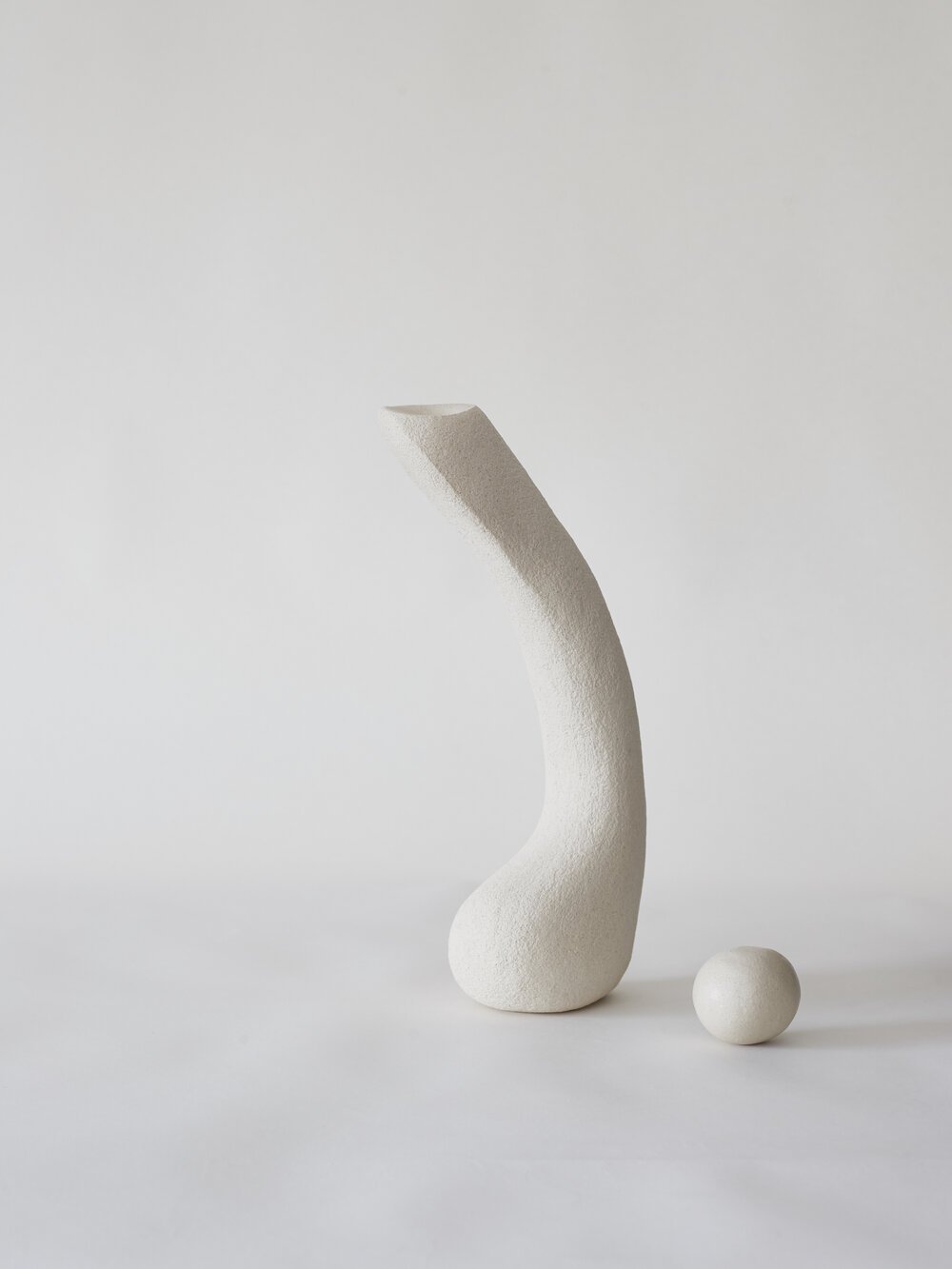Surface Finishes
Ceramics at Re Jin Lee are made with a variety of surface finishes and techniques. For simplicity, we classify these techniques into five basic categories, but sometimes pieces are made with more than one type of finish or technique.
The most straightforward category might be glazed, where glazes are either brushed on multiple times, or dipped or poured on bisqueware (clay that has been fired in the kiln for the first time), then fired to mature state up to 2300ºF.
On the other hand, a matte surface implies that the ceramic is unglazed. However, there are many other techniques that can be applied to a matte surface. Catarina, above, is an example of a slip-finish. Slip is liquified clay or clay slurry, with no fixed ratio of water and clay. Sculptures are slow-dried to a bone dry state and finished with multiple layers of brushed-on slip on the surface
Yolam, shown above, displays a burnishing technique, where raw clay surface is repeatedly rubbed and compressed with a high polished stone at each stage of the drying process. The end result is a smooth surface that softly reflects light.
Finally, a third category of matte is terra sigillata. While sharing similarities in appearance with burnishing, terra sigillata is a technique originating from the Romans and Greeks where ultra-refined clay slip is brushed on in layers. This gives a soft sheen to bone-dry wares, like Louise, above, and if polished or burnished with chamois or a plastic bag while still damp, it can give a high gloss.
To create a smoked finish, pieces are slowly wood (smoke) fired. Unique surface markings can result from many factors, such as the fire, wood, and smoke. This technique can also be applied as a finish to both glazed and matte pieces after burnishing or glazing.
Another unique ceramic technique is Raku, which originated in Japan. Instead of using a controlled, electric kiln, pieces are fired in a fuel-burning kiln - a much faster heating using fire. The pieces are then pulled from the kiln red-hot and quickly placed in combustible materials, then smothered with a container to deprive the set up of oxygen and immediately cooled down.
Because of the number of variables in this process of firing, quick temperature change, and oxygen deprivation, Raku results in an endless array of unique colors and surface effects that can never be precisely recreated.
Finally, pieces can be textured, a process where bits of the surface are scraped off gently with various tools when the piece is at a bone-dry stage. Clay is considered bone-dry when it has lost all the moisture that it possibly can before being fired. It is dry to touch and very fragile - reaching a bone-dry state can take up to 7 days.









